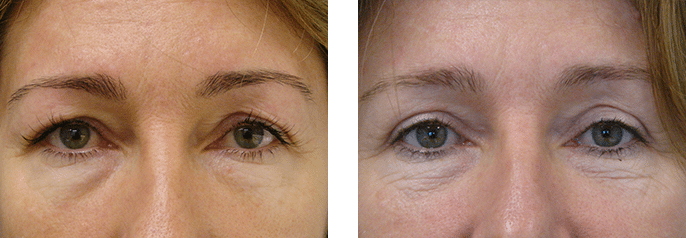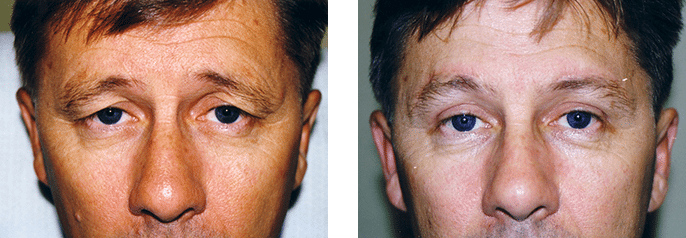Eyelid surgery can restore a more rejuvenated appearance to the entire face.
They say that the eyes are the windows to the soul. When we meet someone, we initially look at their eyes. They are the focal point of our first impression and often reflect people’s state of health and wellbeing. As we age, our upper eyelids start to droop, even to the extent of affecting our eyesight. And puffy bags begin to form under our eyes. This can cause an aged and tired appearance.
As one of the most commonly requested cosmetic procedures, eyelid surgery delivers a more rejuvenated eye appearance. If you’re starting to wonder whether this procedure could be right for you, we know you have so many questions. That’s why we’ve decided to put together a guide with answers to the most commonly asked questions and more.
Download our free guide to discover:
- What’s involved in a blepharoplasty procedure
- How blepharoplasty could help you
- What are the costs involved and Medicare rebates
- The specific risks and side effects

Book your consultation
At a Glance
Blepharoplasty Procedure
Correct drooping upper eyelids and puffy bags below the eyes by removing excess fat, skin and muscle. Upper-eyelid surgery may be eligible for a Medicare rebate.
Eyelid Surgery Time
Dependent on the individual requirements the procedure may take 1-2 hours. The procedure is usually performed under local with sedation, or general.
Duration
A successful operation should give you a more rejuvenated and rested appearance. Skin folds and fat bulges will be removed and eyelid creases improved. Results generally last 7 – 10 years. Sometimes permanent.
Eyelid Surgery Side Effects
Temporary discomfort, tightness of lids, swelling, bruising. Temporary dryness, burning, itching of eyes. Excessive tearing, sensitivity to light for 1—2 weeks.
Eyelid Surgery Risks
Temporary blurred or double vision. Infection, bleeding. Swelling at the corners of the eyelids. Dry eyes. Formation of whiteheads. Slight asymmetry in healing or scarring. Difficulty in closing eyes completely (rarely permanent). Pulling down of lower lids (may require further surgery). Blindness (extremely rare). To read more about surgical risks please ‘click here’.
Eyelid Surgery Recovery
Reading: 2 to 3 days. Back to work: 7 to 10 days. Contact lenses: 2 weeks or more. Strenuous activities, alcohol: about 3 weeks. Bruising and swelling gone: several weeks.
Eyelid Surgery Before and Afters


Cosmetic Surgery Magazine
Take a peek at our feature in Cosmetic Surgery Magazine
Eyelid Surgery FAQS
Both men and women whose vision or appearance is being impaired by excess skin or fat bulges is a suitable candidate for eyelid surgery.
A sound of mind and emotional stability is vital before any cosmetic surgery is performed. A “new face” does not guarantee a new life or an end to all personal problems. It is mostly the mental attitude of the individual that determines a successful outcome.
Australian Medical Guidelines rightly say that we cannot guarantee a patient will experience psychological benefits as a result of an elective treatment.
Scars are the inevitable result of any surgery, although your Dr Flynn will make every effort to keep your scars as inconspicuous as possible. Generally, the incision will be made along natural skin lines and creases. The scars will fade with time and become barely noticeable.
A consultation with Dr John Flynn is the first step for someone considering eyelid surgery. Together, he’ll discuss your goals and expectations, and work closely with you to formulate a tailored treatment plan.
You should always keep in mind that the desired result is improvement, not perfection.
Dr Flynn is dedicated to providing each patient with a personal and authentic consultation. If he believes you don’t need the operation, he will tell you.
